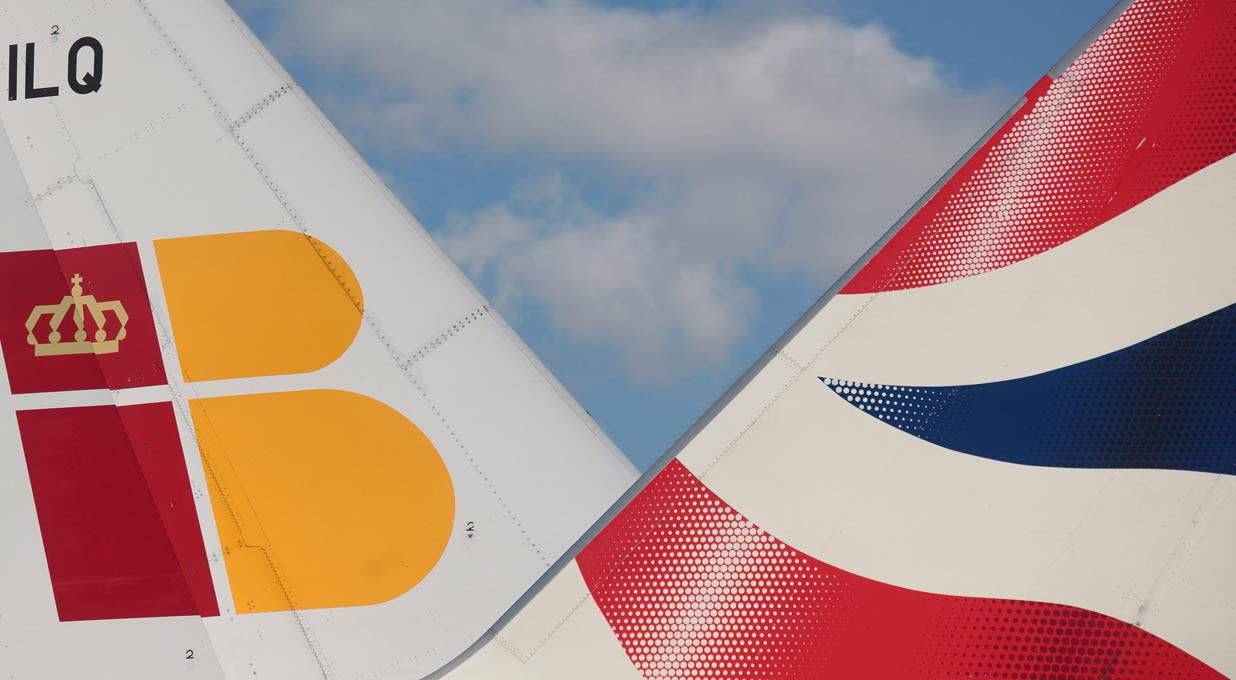IAG’s first-quarter revenue rose 9.2% to €6.4bn, ahead of market expectations. This reflects increased capacity, strong leisure demand and the earlier timing of Easter than in the prior year. On average, planes were 83.1% full in the period, up 1.6 percentage points.
Operating profit improved from €9mn to €68mn. Despite the increased volume of flights, operating costs grew at a slower pace than revenue, helped by tight cost controls and lower fuel prices.
Net debt improved from €9.2bn to €7.4bn, helped by improved cash generation.
IAG said it is “well-positioned for the summer” and expects to generate “significant” free cash flow this year. Market forecasts suggest that full-year operating profits will remain broadly flat at €3.5bn.
The shares were unchanged following the announcement.
Our view
British Airways owner IAG managed to beat market expectations the first quarter. Momentum continues to impress, with profits moving higher off the back of improved leisure demand.
We're particularly pleased by the positive moves on price increases, despite the considerable pressure on customer incomes. With the group’s capacity growing and pressure on fuel prices easing, we see scope for profits to climb higher if the group can keep a tight grip on its other day-to-day costs.
Something else to consider is consolidation in the airline industry. A handful of smaller carriers have gone out of business and IAG's acquisition of Air Europa means there's more market for the taking. We don’t think this upends the investment case. Instead, we view it as a helpful market dynamic and it shows the benefit of having strong, trusted brands in this business.
There are some things to keep in mind though. While pent-up travel demand still has room to run, it can't go on forever. At some point we'll see what normal demand looks like once more. There's a very real risk that consumer behaviour is yet to fully adjust to a world of higher costs. The group's also more exposed to business travel than other short-haul-focused carriers, and that corner of the market would take more of a hit should business consumers avoid departure gates.
Costs can be a drag, especially, with the overall rise in costs that comes with getting a massive business back to its full potential. Some of these costs, like fuel, are outside the group’s control though and any movements in price will affect the whole industry.
The group’s also set to spend big on its transformation overhaul, which includes leveraging data and technology to improve the customer experience. Many frequent users of ba.com will cheer the news that the website’s getting some much-needed TLC, but IAG is also hoping to boost efficiency by reducing disruption. These are all great targets, but the pace of delivery is far from guaranteed. It’s crucial that BA gets this right. The dominance of airlines can fade at short notice if customers lose their patience.
Debt continues to head in the right direction and we’re comfortable with the current levels. But shareholder payouts could take a backseat for a while longer.
For now, it seems the worst is over for IAG and the current risks to demand look more like turbulence than a complete grounding. We're a lot more positive than we've been for some time. But keep in mind, IAG is likely to face the worst of any slowdown in consumer spending.
IAG key facts
All ratios are sourced from Refinitiv, based on previous day’s closing values. Please remember yields are variable and not a reliable indicator of future income. Keep in mind key figures shouldn’t be looked at on their own – it’s important to understand the big picture.
This article is not advice or a recommendation to buy, sell or hold any investment.No view is given on the present or future value or price of any investment, and investors should form their own view on any proposed investment.This article has not been prepared in accordance with legal requirements designed to promote the independence of investment research and is considered a marketing communication.Non - independent research is not subject to FCA rules prohibiting dealing ahead of research, however HL has put controls in place(including dealing restrictions, physical and information barriers) to manage potential conflicts of interest presented by such dealing.Please see our full non - independent research disclosure for more information.








